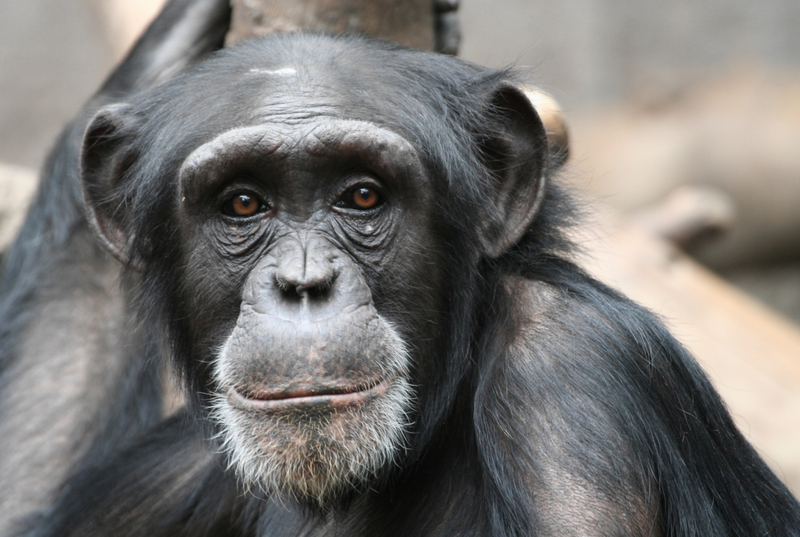Table Of Content

Taking them from their natural habitat has caused a decline in their populations. People also hunt chimps for food (bushmeat) or to protect their crops from being eaten by hungry chimps. These conditions, plus loss of habitat, have resulted in the chimpanzee being endangered.
Can Animals Live Without Fur?
But these animals have mastered the art of survival without the fuzz. Luckily, these 15 animals without fur don’t seem to mind the fur or feather loss. The skinny is not to be confused with another, unrelated hairless guinea pig, the Baldwin, which is born with a coat that falls out in adulthood.
Go Further
Graying occurs until a chimpanzee reaches midlife and then plateaus as they continue to age, according to Elizabeth Tapanes, a Ph.D. candidate in the GW Department of Anthropology and lead author of the study. While graying is among the most salient traits a chimpanzee has—the world's most famous chimpanzee was named David Greybeard—there is significant pigmentation variation among individuals. Japanese macaques inhabit the Shimokita Peninsula at the northern end of the Honshu Island of Japan, the northernmost habitat of any primate in the world. Not only Shimokita macaques but others that live in Japan sometimes close together into a knot, consisting of several to more than 10 or more, to prevent heat loss in cold days. This kind of tight clustering might have occurred in hairless hominin families in cold days, provably strengthening family bond. Molecular data confirm the African apes as our closest living relatives and place the CLCA and modern humans recently, perhaps 5–7 Mya (Page & Goodman 2001).
Body
What Happened When Humans Became Hairless - DISCOVER Magazine
What Happened When Humans Became Hairless.
Posted: Fri, 13 Dec 2019 08:00:00 GMT [source]
Additionally, understanding the environmental factors that contribute to chimpanzee hairlessness could help us better understand the impact of environmental factors on human health. Hairless chimpanzees, also known as “naked” or “bald” chimpanzees, are a rare and unique group of primates with a genetic mutation that results in the absence of hair on their bodies. While they have captured the attention of scientists and the public alike, they also face significant conservation challenges in the wild. This article will explore some conservation challenges facing hairless chimpanzees and what is being done to address them. Chimpanzees are highly social animals living in complex societies with rich behaviors and communication methods.
The researchers then analyzed that data, comparing it to the age of the individual chimpanzees at the time the photos were taken. One of the most significant impacts of hairlessness on chimpanzee behavior is its effect on grooming and social bonding. Grooming is an essential behavior for chimpanzees, serving as a way to maintain social relationships and reduce tension within groups.
Hairless Parrot
He might sometimes have taken care of the baby and strengthened family bonding. The mother would have sexually accepted him at any time as a reward for food and also desired his return to their nest. Sexual relations in a face-to-face posture, which stimulate the clitoris irrespective of the estrus cycle, might have strengthened the pair bond.
Do Other Animals Besides Humans Go Bald?
In Neufeld and Conroy's opinion, getting hair instead of fur generated several problems for hominids. They speculated that long hair would have made their head hotter, reduced their swimming speed, provided inaccurate information on gender, and offered a convenient haven for parasites. While you may have probably seen the Sphynx cat without fur, there are many more animals that thrive in the wild in their nakedness. The breed has an ancient lineage, having been depicted on pottery from A.D. What’s more, the red uakari is the only monkey with a completely red head. Its coloring isn’t a pigment, but rather is due to specialized blood vessels close to the skin.
Hairless chimpanzees are a rare sub-species born with little to no hair on their bodies. They are also commonly called “naked chimpanzees” because they lack fur. While hairlessness is not unique to chimpanzees, it is relatively rare, and scientists are still trying to determine the exact cause of their hairlessness. This research calls into question the significance of the graying phenotype in wild non-human species. While graying is among the most salient traits a chimpanzee has -- the world's most famous chimpanzee was named David Greybeard -- there is significant pigmentation variation among individuals.
These 15 Animals Without Hair Are Barely Recognizable
Bipedality might have evolved for food transport in a dry savannah habitat (Hewes 1961). A terrestrial feeding posture, rather than walking adaptation, was important for bipedalism (Jolly 1970). Bipedal threat display and appeasement behavior were important for the peaceful resolution of intragroup and interspecific conflicts (Jablonski & Chaplin 1993). Upright hominins were able to forage longer in the open sun (Wrangham 1980). Hominins were scavengers, and bipedalism was a necessary adaptation that enabled migration for sufficient food by scavenging (Sinclair et al. 1986). When biped hominins moved to an open savannah environment, they had a thermoregulatory advantage (Wheeler 1991).

This is reminiscent of the formula learned in elementary school, by which a minus multiplied by a minus produces a plus. Baby/child-carrying hairy primates, a lactating human mother, and a hairless dog. All primate mothers excepting those of humans carry their young without using their hands, even when moving through the jungle tree canopy; hair is a baby carrier (A–D). A semidominant mutation of a FOXI3 family gene rids of most body hairs except for scalp and tail hairs.
By participating in such a program, you contribute to the care of an animal and typically receive periodic photos and other updates. Because chimps are at least twice as strong as humans, they require a very sturdy enclosure to keep them contained when you are unable to watch them. This model of cross-sector chimpanzee capacity planning will be groundbreaking and may serve as a model for other endangered species in need.
However, more research is needed to understand hairlessness’s impact on chimpanzees healthfully. Hairless chimpanzees are rare, with only a few known populations in the wild. While these formulated diets offer much of what a chimpanzee needs, feeding them this way fails to encourage natural foraging behaviors—important mental stimulation for a chimp.
Opening nuts, digging for insects, picking leaves off of branches, and biting into fruit and eggs are important to the well-being of a chimp. And avoid giving your chimp any processed or fatty foods, as this will not support a long, healthy life. Chimps often get on a feeding routine and prefer their meals at the same time each day. Your chimp should also have access to a dish of fresh water at all times, which you refresh at least daily. Owning a chimp, like any large wild animal, is likely to prove detrimental for both the animal and its keeper. Chimpanzees have evolved to live freely among their own kind in the wild.
The North American Primate Sanctuary Alliance was brought in to help locate new homes and lead the campaign to save these chimpanzees in need. Your gift provides 300+ chimpanzees with a wonderful life at sanctuary. Fresh meals, socialization, and, best of all, the freedom to choose how they spend their days.











